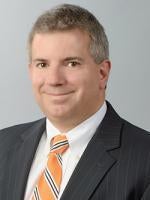This week, the U.S. Department of Labor (DOL) published its highly anticipated Final Rule, which allows working owners with no employees and companies in unrelated industries to band together to create a single defined contribution retirement plan for their employees, known as a multiple employer plan (MEP).
Specifically, the Final Rule expands the definition of “employer” under Section 3(5) of the Employee Retirement Income Security Act of 1974, as amended (ERISA), to allow bona fide employer groups and professional employer organizations (PEOs) to act as an “employer” for purposes of sponsoring a MEP. The MEP structure is intended to broaden the availability of employer-sponsored retirement plans, especially among small employers, by reducing the cost and regulatory complexity of plan administration. Consequently, the MEP sponsor, and not the individual employers, would serve as the MEP’s plan administrator and named fiduciary, subject to all of ERISA’s provisions, including the fiduciary, reporting and disclosure requirements, and the prohibited transaction provisions.
Bona Fide Group or Association
The Final Rule provides five criteria that an employer group or association must satisfy in order to offer a MEP to its employer members. These criteria are aligned with the Department’s recently invalidated Association Health Plan rule:
-
The association must have at least one “substantial business purpose” unrelated to providing MEP coverage to its employer members, even if the group’s primary purpose is to offer such coverage. A “substantial business purpose” is deemed to exist if the association would be a “viable entity” absent the MEP coverage. Even if the association’s primary purpose in the future becomes offering MEP coverage, this requirement may still be met so long as the association’s previous operations suggest that it could be viable without offering MEP coverage, assuming the organization continues its pre-MEP activities.
-
Each employer member of the association must act directly as an employer of at least one employee who is a participant in the MEP.
-
The association must have “a formal organizational structure with a governing body and have by-laws or other similar indications of formality.”
-
The activities of the group must be controlled by its employer members, and the employers that participate in the MEP must control the MEP in form and in substance. The Department described several factors that are important in determining whether the requisite control exists, including whether the employers regularly nominate and remove officials who preside over the association’s governing bodies, and whether the employers wield approval and veto power over decisions related to the formation and design of the MEP.
-
Each employer member must have a “commonality of interest,” either by participating in the same trade and industry, or being headquartered in the same geographic area (including the same metropolitan area which may span more than one state). The geography test was one of the provisions specifically cited by the United States District Court of the District of Columbia as running afoul of the purpose of ERISA when it invalidated the Association Health Plan rule earlier this spring. However, the Department continues to promote this test in the MEP Final Rule.
-
MEP coverage must not be made available to workers outside the group of participating employer members. Although the Final Rule excludes arrangements known as “Open MEPs,” which are defined contribution plans that cover employees with no relationship other than their participation in the MEP, the DOL requests comments on Open MEPs.
-
The group or association must not be a bank or trust company, insurance issuer, broker-dealer or other similar financial service firm, or owned or controlled by such an entity. The DOL contemplates that this provision will help ensure that the employer association will act solely in the interest of the employer members, instead of being motivated by commercial interests.
Working Owners
Sole proprietors and other self-employed individuals may act as both “employers” and “employees” of their businesses for purposes of participating in a bona fide employer group MEP. Working owners must work at least 20 hours per week (80 hours per month) or have certain levels of income attributable to self-employment activities. The working owner’s status under the Final Rule must be periodically confirmed and monitored by the MEP.
PEOs
According to the Internal Revenue Service, a PEO is an entity that “enters into an agreement with a client to perform some or all of the federal employment tax withholding, reporting, and payment functions related to workers performing services for the client.” These arrangements usually require the PEO to assume employment responsibilities that the employer would otherwise fulfill on its own; such as human resource tasks, employee benefit plan administration, and workers’ compensation claim administration. The Final Rule recognizes that PEOs traditionally act “indirectly in the interest of [their client] employers” when they perform these employment functions on behalf of their employer clients.
The Final Rule provides that a bona fide PEO is capable of establishing a MEP if it meets the following requirements:
- The PEO must perform “substantial employment functions” on behalf of the client employers. The DOL employs a general facts and circumstances test for this requirement. However, the Final Rule contains a safe harbor test whereby the PEO will be considered to perform “substantial employment functions” when:
- The PEO assumes responsibility for and pays wages to employees of its client-employers that adopt the MEP.
- The PEO assumes responsibility to pay and perform reporting and withholding for all applicable federal employment taxes for its client employers that adopt the MEP.
- The PEO plays a definite and contractually specified role in recruiting, hiring, and firing workers of its client employers that adopt the MEP.
- The PEO assumes responsibility for and has substantial control over the functions and activities of any employee benefits which the service contract may require the PEO to provide.
- The PEO has substantial control over the functions and activities of the MEP, as the plan sponsor, the plan administrator, and a named fiduciary.
- The PEO ensures that each client-employer that adopts the MEP acts directly as an employer of at least one employee who is a participant covered under the MEP.
- The PEO ensures that participation in the MEP is limited to current and former employees of the PEO and of client employers as well as their beneficiaries.
Continuing Responsibility of the Bona Fide PEO or Employer Association
When a participating employer terminates its relationship with a bona fide employer group or PEO, the termination does not remove the fiduciary obligations that the group or PEO owes to the participants as the plan administrator and named fiduciary. These obligations will continue until the participants are no longer covered by the MEP, or all assets are paid to the participants and beneficiaries.




 />i
/>i
